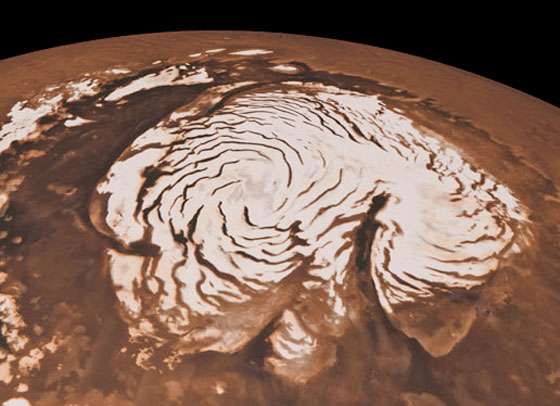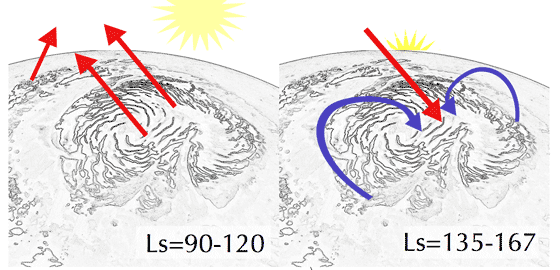Farming water on Mars

Mars is a different place than Earth. There is water on Mars, more than the Moon, but lots less than on our own world. But the water on Mars is the same H2O we have here, and we should use it when we travel to Mars and set up the first human bases. "Living off the land" on Mars is going to be crucial, because we can't hope to bring all the water we need.
We'll have to be water farmers.
That's why, just like farmers here on Earth need to think about how much water they use and where they're getting it from, Martian farmers will need to know about the martian water cycle, how it operates seasonally, where the water comes from, and where it's being stored now.
That's what my research is all about. I am doing the water work for the first Martians, remotely from the Red Planet in space and remotely from the first settlers in time. A paper I have just published establishes the water cycle in the summertime polar cap. The winter is a lot more challenging, and no farmer or robot is going to want to be there. In winter, the dry ice at the Martian poles freezes, and every exposed surface cools down to 148 K, or -190 F.
But during the summer, the polar caps thaw and occasionally get up to a balmy 200 K (-100 F). Water molecules start warming up and traveling around the cap. Using data from an infrared spectrometer called CRISM on the Mars Reconnaissance Orbiter, we've tracked the movement of water ice and the nighttime snowfall events that happen during the north polar cap summer.

What we've found is that we can explain the movement of water around the cap by identifying a latitude at which the polar cap ice goes from a 'subliming' state in the middle of summer, to when it goes into the 'condensing' stage, late in summer as the Sun gets lower. We've used this pattern to work out how much ice gets transported onto the Martian cap in a year. Whatever ice remains on the cap at the end of summer is going to become a permanent part of it, because that ice will be covered in dry ice as winter once more sets in. This is probably how the cap has built up over time, and gives the future Martian farmers a figure for how much ice they can renewably harvest each northern summer.
Provided by SETI Institute




















